Revitalization of Marginalized Communities in Japan through the Arts
CONTENTS
Art Festival in Setonaikai (Seto Inland Sea)
On a scorching summer day, Ogijima, a small island with about 160 residents was besieged by a swarm of tourists. Local residents were surprised but nonetheless gladdened to see so many strangers. “I rarely see people outside of my island. But they are very welcome,” said one islander, an 83-year-old woman. She had lost her husband a few years ago and now she leaves her island only rarely, and communicates mostly with neighbors of the same generation. But she’s happy to see outsiders roaming around the island.
“This adds a subject of our daily conversation,” she smiled.
12 Islands for the Art Venue
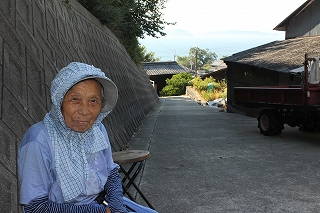
Ogijima, suffers from depopulation and aging. It is one of 12 islands chosen as the venue for an art festival, the Setouchi Triennale 2016. This year marks the second time for the festival, which spans the spring, summer and autumn seasons. The autumn session is held from October 5 to November 4. Triennale is an Italian word that means “once every three years.” Compared with the first time in 2010, the venue has been expanded and the number of works of art on display increased.
The 12 islands are located in Japan’s Seto Inland Sea, which is dotted with many small and large islands. This is what makes the landscape, which some people call Japan’s Mediterranean, so special. Visitors can enjoy seeing the art works in scenic natural surroundings. The art works, displayed outside and indoors, were created by both famous professionals and amateurs. Ogijima is just off the coast of Takamatsu, Kagawa Prefecture, and accessible by a 40-minute ferry ride. The island has become a venue for 23 large and small artworks during the summer season. Upon arrival at the port of Ogijima, visitors are welcomed by a gigantic object called “Ogijima’s Soul.” The roof of this artwork is a latticework of letters from numerous world languages, which represent human diversity. On sunny days, the roof casts uniquely patterned shadows on the ground. It’s possible to walk beneath this object. It works as an information center as well as a ticket counter for the ferry.

The island is small, about 1.4km2 in area, and the works of art are placed in proximity to each other, so visitors can walk around to see them. Just five minutes on foot from the port, you see giant legs with island-like body. Its title is “Walking Ark” and its author, Keisuke Yamaguchi, says, “This sculpture draws inspiration from Noah’s Ark. The ark, which is painted white and blue to blend in with the sea and sky, seems poised to walk across the water.”
It’s interesting just to walk around the island, whose narrow, winding alleyways make it easy to lose one’s sense of direction, but which nevertheless accord a relaxing and quaint feeling. At road sections, elderly women can be seen conversing with one another, and when you greet them, they return your greeting with a smile, as befits the islanders’ easygoing and amiable spirit. Many vacant houses can be seen, however, due to the depopulation and aging of the remaining residents. During the festival, the walls of those vacant houses are painted and become artworks. They can be found throughout the village, waiting for visitors to discover. The paintings are produced utilizing discarded lumber from the island, which are decorated with random silhouettes representing scenes of Ogijima.
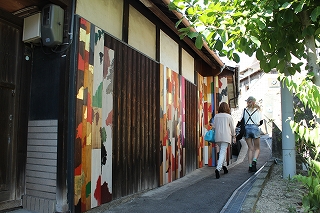
Other vacant houses are utilized for displaying artworks inside. A wooden building that formerly housed a hardware store now becomes a venue for a work named “Corridor of Time.”
One of Kagawa’s traditional industries is production of Japanese umbrellas. This installation is constructed of almost 600 umbrella frames, which are rotated by motors. Lights set inside the frames cast revolving shadows.
The admission charge for viewing indoor artworks is usually 300 yen each. But a multi-use “passport,” valid for the entire festival, can be purchased for 4,500 yen ($45). Some of the abandoned houses are converted into a free-of-charge resting place, tea shop or restaurant as well. Onba Factory is one of those tea shops. Onba (small push-carts resembling baby strollers) are essential for transporting things up and down Ogijima’s steep, narrow lanes. In 2010, Onba Factory began producing onba with colorful designs to brighten up the village. This year the venue operates as a café at which visitors can enjoy a drink while viewing the ocean and colorful onba on display.

One of Kagawa’s traditional industries is production of Japanese umbrellas. This installation is constructed of almost 600 umbrella frames, which are rotated by motors. Lights set inside the frames cast revolving shadows.
The admission charge for viewing indoor artworks is usually 300 yen each. But a multi-use “passport,” valid for the entire festival, can be purchased for 4,500 yen ($45). Some of the abandoned houses are converted into a free-of-charge resting place, tea shop or restaurant as well.
Onba Factory is one of those tea shops. Onba (small push-carts resembling baby strollers) are essential for transporting things up and down Ogijima’s steep, narrow lanes. In 2010, Onba Factory began producing onba with colorful designs to brighten up the village. This year the venue operates as a café at which visitors can enjoy a drink while viewing the ocean and colorful onba on display.
Volunteers and Locals Are Backing Up
There are many people involved in this art festival, including Local islanders. They participate in “Time Tube” art project, making tubes from rolled up newspapers and magazines. The works are displayed in an abandoned house that was transformed into an art space.
“Memory Bottle” is also an artwork which is strongly related to villagers. Memories of life on Ogijima gleaned from the villagers and objects the artist found on the island were sealed in bottles each equipped with a small light. Almost 1,000 memory bottles cast their light in an old storehouse.
The summer vacation brought many young visitors as well as families. A young couple in their 20s from Osaka Prefecture who purchased passports commented, “We like the ocean very much and this triennale is an ideal place for us. Seeing the artworks surrounded by the sea is a real thrill, and it’s refreshing to enjoy them.”
Many tourists came in family groups. One parent in a family of five from Kobe City in Hyogo Prefecture remarked, “This is our second time to come to this year’s triennale. My kids love discovering things. They are dashing around the island and it’s hard for us parents to keep up with them. But for the kids it will surely remain as a happy summer memory.”
Among the other outside visitors are volunteers, who come from all over Japan and even from overseas. A male university student from Saitama Prefecture told, “I first came here as a tourist in 2010. This year I’m back as a volunteer. I wanted to know more about this festival and get to know the locals and become more involved.” Most of the volunteers I encountered came from outside Kagawa Prefecture, and all love the triennale. This year more than 3,000 people volunteered assistance and played important roles in its success.
Background of the Setouchi Triennale
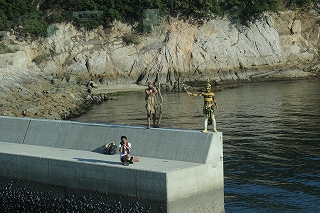
The 2016 festival has adopted the theme of “Revive the Ocean.” In past times, the Seto Inland Sea provided an important infrastructure for seagoing vessels, which brought in foreign culture and various types of information. By this, the inhabitants of the islands developed unique customs and society. Due to trends toward globalization, however, the islands’ population has declined and aged, resulting in the gradual loss of its singular ways. That situation inspired the title, reflecting the aim of revitalizing the sea and sending the attractions to the world beyond.
As noted in a report issued by the Kagawa Prefecture Tourist Center, “The Setouchi Triennale is not just for tourists and welcoming them, but for us to rediscover the potentials of each community and refine, as well as nurture those elements. In that way, locals can once again take pride in their communities and retain their affection for them as well.”
The first Setouchi Triennale in 2010 welcomed around 930,000 visitors; this year’s aims for one million.
Related article: Aichi Triennale a city-type art festival in Japan



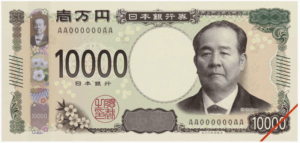
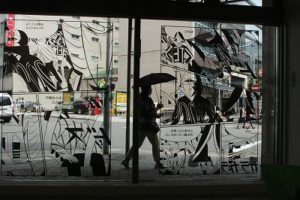
One thought on “Revitalization of Marginalized Communities in Japan through the Arts”